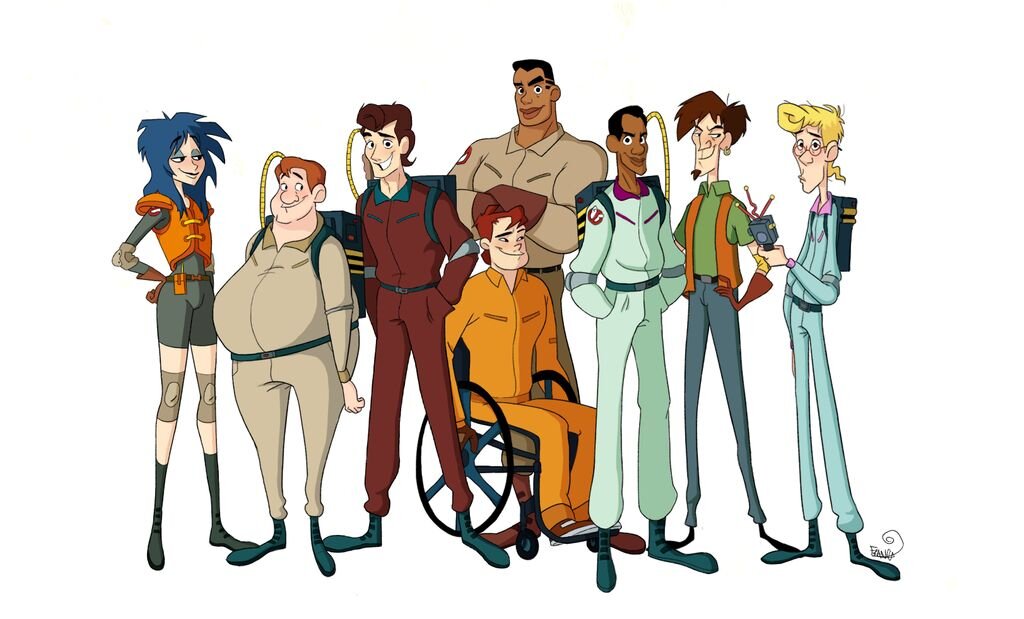The Forgotten Lessons of Extreme Ghostbusters
Yesterday my four year old son Declan said that he wanted to watch “Ghostbusters, but not too scary.” So I dutifully entered “Ghostbusters” into Amazon’s search engine and encountered a 1990s cartoon called Extreme Ghostbusters.
The title sounded vaguely familiar. I half-remembered hearing about it at the time of its release, in 1997, my first year of writing about pop culture professionally. But I guess I assumed that the cartoon was The Real Ghostbusters under a different name that followed the continuing adventures of original Ghostbusters Peter Venkman, Ray Stantz, Egon Spengler and Winston Zeddemore in the years following Ghostbusters, Ghostbusters II and The Real Ghostbusters.
I was right only in the sense that technically speaking, Extreme Ghostbusters is a sequel series to The Real Ghostbusters. Egon Spengler (once again voiced by Maurice LeMarche) returns as the world’s brainiest spook-stopper only in The Extreme Ghostbusters Egon is primarily a mentor figure to a brand new batch of ghostbusters that can only be described as extreme.
There’s Eduardo Rivera, a goateed, earring-sporting slacker in the Peter Venkman mold who is quick with a wisecrack or a one-liner as well as Kylie Griffin, a death-obsessed female Goth, smart black nerd Roland Jackson and finally Garret Miller, a macho jock who does not let being in a wheelchair keep him from being a, ghost-busting badass.
I was legitimately shocked to discover that Extreme Ghostbusters didn’t just tweak the characters a little; they straight up pulled a Poochie and tossed out much, if not most, of its beloved mythology and coterie of beloved characters for the sake of chasing a younger audience that might dismiss the original Ghostbusters, which my generation knows and reveres as the greatest fictional creations since Shakespeare, as old and lame.
Extreme Ghostbusters are just what their name suggests: a ghostbusters team reconfigured for a totally extreme generation of thrill seekers whose lives revolved around Red Bull consumption, bungee jumping and binge-watching the X Games while doing sick skateboarding tricks on an indoor ramp.
In other words, exactly the kind of failed, fascinatingly misconceived cultural detritus I have devoted my career to exploring in exhaustive detail. But Extreme Ghostbusters did not even pop up on my radar until yesterday.
Where was the outrage when Extreme Ghostbusters fucked relentlessly with the perfect and holy mythology of the original movie for the sake of “diversity” and winning over the kids?
The internet, or rather the sizable portion of the internet dominated by angry, entitled man-babies, collectively shat itself and then threw a months-long fit when Paul Feig had the unforgivable audacity to try to make a ghost-busting movie starring women in the prime of their careers rather than old men cynically strapping on the Proton packs for the sake of a massive payday.
Where were these noble guardians of the integrity of the Ghostbusters legacy back when Peter, Ray and Winston were unceremoniously replaced by the decidedly less iconic quartet of Eduardo, Kylie, Roland and Jarret?
How could something that created a massive tidal wave of anger and controversy and nerd rage in 2016—shamelessly changing the mythology of the Ghostbusters to reach a different, younger, hipper audience—go borderline unnoticed in 1997?
There’s even a girl!
It’s important to remember that the internet was a much different place in 1997. It was more primitive. It had not yet evolved into a perfect, scarily efficient machine for man-child outrage and entitled temper tantrums.
The internet was still relatively new so a crazy idea existed that art or entertainment, like Ghostbusters, belonged to the people who created it, and/or the corporations that own it, rather than enraged Poindexters who think that consistently arguing with strangers about Star Wars for ten to fifteen years on message boards gives them a sense of ownership over their entertainment of choice.
Nerds were less entitled back in 1997. MRAs were not a thing back then. Gamergate had not yet weaponized the anger, sexism and resentment of sexist male gamers and geeks into a potent political and cultural force. Ghostbusters was not yet thought of as sacrosanct, sacred, holy. It was still possible to see Ghostbusters as just a goddamn movie.
The stakes were also different and lower. A TV cartoon is simply not as big a deal as a two-hundred million dollar movie. Extreme Ghostbusters failed a lot more quietly than the Ghostbusters reboot, in part because it didn’t have some of the worst dudes on the internet not just loudly rooting against it but actively campaigning for it to fail for political reasons.
In other words, we had the right attitude about Ghostbusters back then. We didn’t freak the fuck out because someone changed something we loved as children. A vicious culture war did not ensue over which Ghostbusting unit was better, the original gang or the newfangled quartet of college-aged youngsters.
Extreme Ghostbusters lasted but a single season and that was the end of it. That’s okay. Sometimes things fail. Sometimes they succeed. It doesn’t ultimately matter so when tempers flare and people get angry over the upcoming Ghostbusters reboot let’s remember that in the late 1990s a sketchy-seeming Ghostbusters cartoon lived and died and was forgotten and no one particularly seemed to care.
It may be impossible to get back to that place of noble, principled apathy considering what a big fucking deal the female Ghostbusters proved to be but let’s at least give it a shot. Needless to say, it would be wonderful and an exquisite change of pace if we as a culture can once again behave like grown-ups about the ultimate merits and importance of what is ultimately kiddie entertainment.
Support independent media and help ensure a robust present and future for the Happy Place over at https://www.patreon.com/nathanrabinshappyplace
OR get in on the big Weird Accordion to Al book campaign: https://make-the-weird-accordion-to-al-book-a-ridiculous-r.backerkit.com/hosted_preorders







